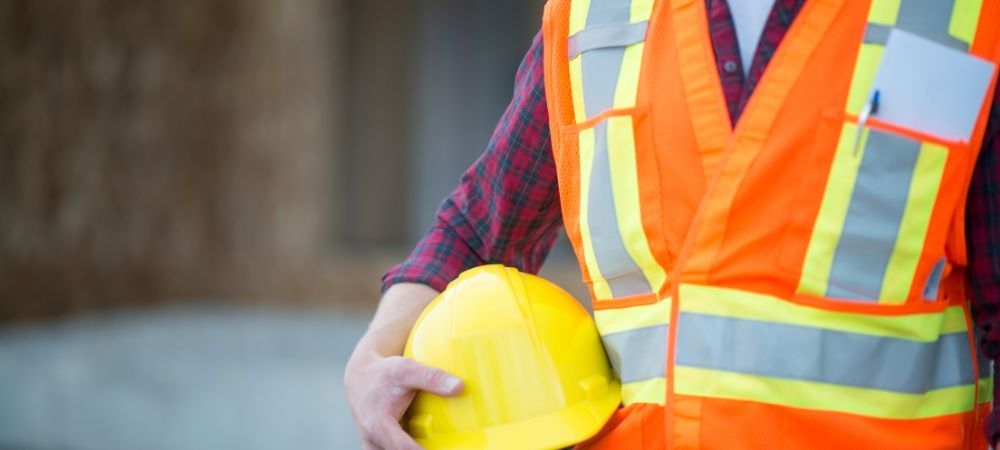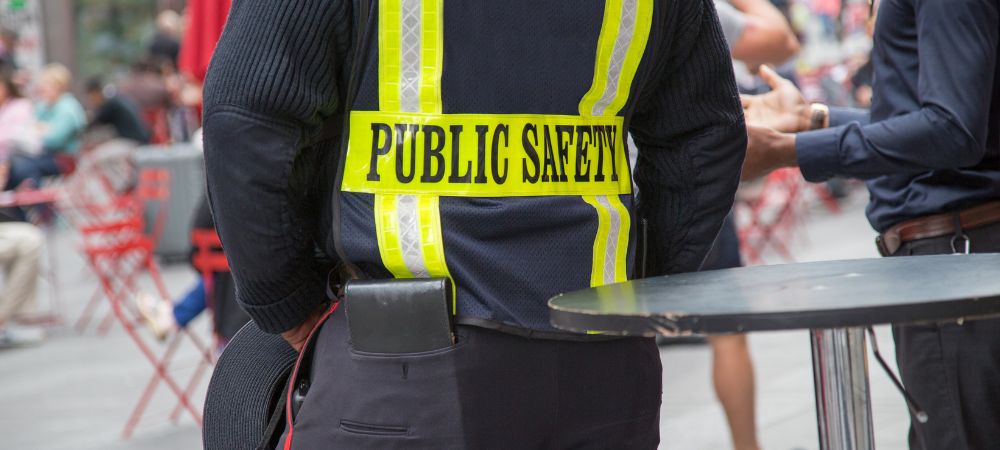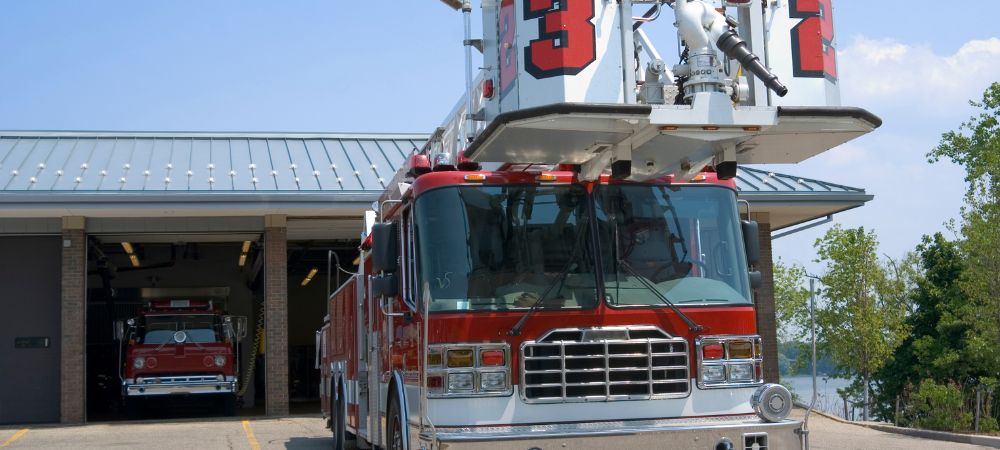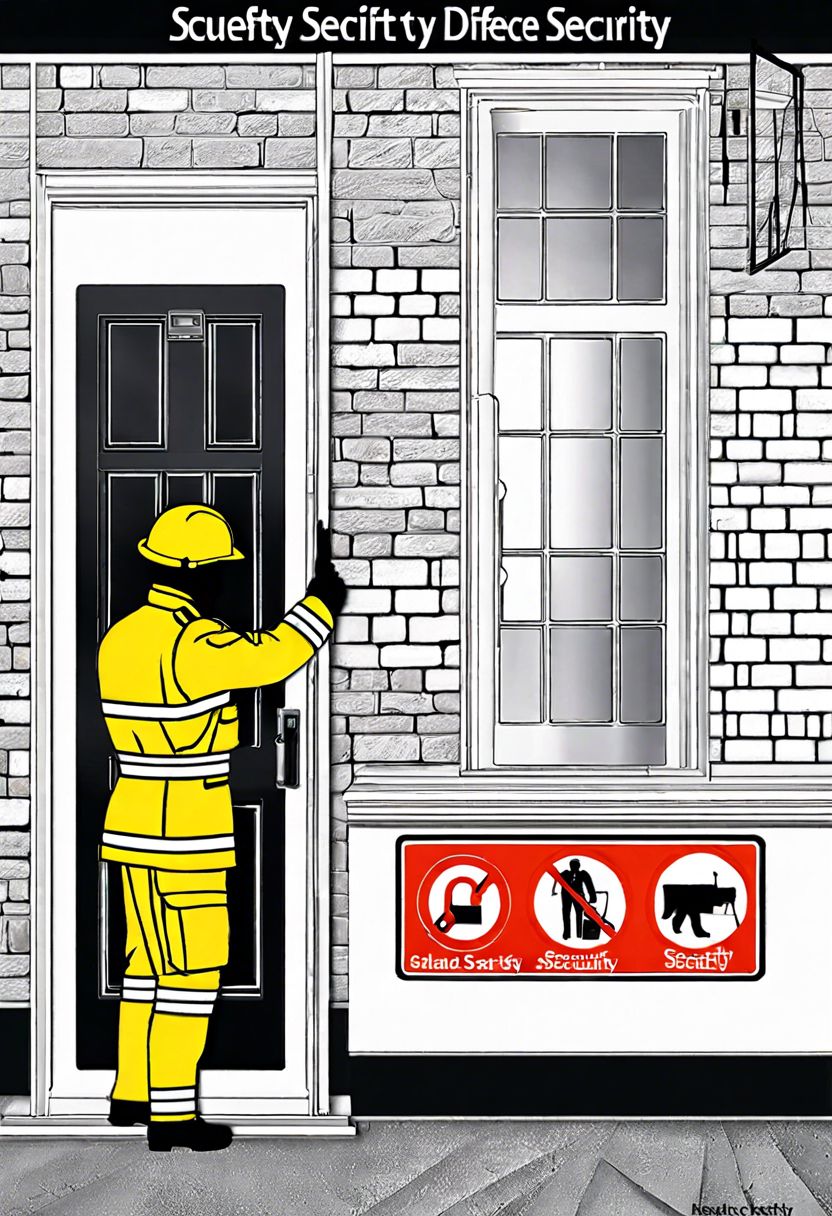

Community policing, a concept that's been around for decades, represents a shift in the way law enforcement engages with the communities it serves. Receive the inside story check right now. To understand its historical background and evolution, it's important to look back at how policing has changed over time.
In the early days of policing in the United States-think late 19th and early 20th centuries-the focus was primarily on maintaining order through what were often rather authoritarian tactics. Police forces were more about control than community engagement. They weren't exactly known for building relationships or trust within neighborhoods. Instead, officers patrolled their beats and enforced laws without much input from the people they served.
However, by the mid-20th century, things started to change. The civil rights movement of the 1960s brought significant social upheaval and highlighted deep-seated issues between police and minority communities. Many folks were upset with how law enforcement was handling protests and civil unrest. It became clear that something needed to be done to bridge this growing divide.
Enter community policing. This approach began gaining traction in the 1970s as a response to these tensions. Rather than just enforcing laws, officers started focusing on building relationships with local residents-getting to know them personally rather than just seeing them as potential criminals or victims. The idea was simple but revolutionary: if police could work together with community members, they'd be able to solve problems more effectively.
One of the key aspects of community policing is problem-solving techniques which encourages officers not only respond to incidents but also identify underlying issues causing those incidents in first place. For example instead of simply arresting someone for drug use they might work with social services organizations address addiction issues directly thus preventing future crimes related substance abuse.
Of course there have been bumps along road implementing these strategies hasn't always easy some departments resisted changes preferring stick traditional methods others struggled find funding necessary support new initiatives but overall trend toward more collaborative approach undeniable
By 1990s many police departments across country had adopted some form community policing President's Crime Commission even recommended widespread implementation practice Today it's seen integral part modern law enforcement strategy although challenges still remain
For more details view listed here. In conclusion history evolution community policing tells story adaptation transformation within field law enforcement moving from rigid authoritative model towards one emphasizes cooperation mutual respect It's journey far complete yet progress made truly remarkable
Community policing is a term that's often tossed around in conversations about law enforcement, but what does it really mean? Well, at its core, community policing is all about building stronger relationships between the police and the communities they serve. It's not just about officers patrolling the streets; it's more than that. The principles and objectives of community policing are vast and varied, but let's dive into some key aspects.
First off, it's crucial to understand that community policing emphasizes collaboration. Police can't do their jobs effectively if they're working in isolation from the very people they're supposed to protect. By engaging with residents, businesses, and local organizations, police officers can get a better sense of the issues facing their communities. They're not just enforcers of the law; they become problem solvers who work together with citizens to come up with solutions.
One core principle is trust-building. Without trust, there's no way for community policing to succeed. It's kinda like any other relationship – if you don't trust someone, you're not likely to cooperate with them or take them seriously. So how do cops build this trust? By being approachable and transparent! They need to show up at community events, listen to people's concerns without judgment (and without making empty promises), and be consistent in their actions.
Another objective of community policing is crime prevention rather than simply responding after crimes have been committed. This proactive approach involves identifying potential problems before they escalate into serious issues. For instance, if there's an increase in petty thefts in a neighborhood, officers might work with local residents on strategies like better lighting or forming neighborhood watch groups.
Oh! And let's not forget about accountability – another cornerstone of effective community policing. Get access to further details check that. Officers must be held accountable for their actions because when they aren't, public confidence takes a hit. Accountability isn't just top-down either; it goes both ways. Communities should feel empowered to hold their police departments accountable through regular feedback mechanisms.
But hey! Community policing isn't perfect and doesn't solve every problem out there. It requires time and commitment from both sides – something that's easier said than done sometimes! Not everyone will buy into it immediately; skepticism can run high especially where there's been historical tension between law enforcement and certain communities.
Moreover, training plays a huge role in making sure officers are well-equipped for this style of policing-it's not just something you can jump into without preparation! Police academies need curricular adjustments that focus on communication skills as much as tactical ones.
In conclusion (oh boy!), while there are challenges inherent in adopting community policing practices widely-limited resources being one-the potential benefits far outweigh these obstacles if implemented thoughtfully! Building real connections based on mutual respect could lead us towards safer neighborhoods where everyone feels valued-and isn't that worth striving for?
So yeah...community policing may sound like an idealistic endeavor but considering its core principles and objectives: collaboration over isolation; trust instead of fear; prevention before reaction-these tenets offer promising pathways toward reimagining public safety.
In the United States, OSHA (Occupational Safety and Health and wellness Management) policies have actually helped reduce office casualties by more than 65% considering that 1970.
The setup of speed cameras reduces the incident of road crashes by about 40%.
Yearly, foodborne diseases impact around 1 in 10 people worldwide, emphasizing the relevance of food security methods.
On average, youngsters will certainly have near 700 injuries needing medical interest by the time they get to teenage years, stressing the importance of youngster safety measures at home.
In today's world, there's no denying that the impact of natural disasters can be catastrophic.. It's crucial to find ways to boost emergency preparedness and one such way is to utilize technology for early warning systems.

Posted by on 2024-07-06
Measuring the Effectiveness of Community Policing Strategies is no easy feat.. I mean, it's not like there's a one-size-fits-all approach to this, right?

Posted by on 2024-07-06
When it comes to the topic of Emergency Preparedness and Response, one can't ignore the importance of Post-Emergency Recovery and Support.. It's a phase that often gets overlooked, but honestly, it's just as crucial as the immediate response during an emergency.

Posted by on 2024-07-06
In this ever-evolving digital age, public safety has increasingly become intertwined with cybersecurity measures.. As we look to the future, it's clear that new trends in cybersecurity will play a pivotal role in fortifying our public safety infrastructure.

Posted by on 2024-07-06
Community policing and public safety, oh boy, where do we even start? It's a relationship that many folks talk about but few truly grasp. You'd think it's just common sense – police officers working closely with the community to keep everyone safe. But, it's not always that simple.
First off, let's get one thing straight: community policing ain't just about cops walking around neighborhoods shaking hands and kissing babies. It's much more than that. It involves building trust between the police force and the residents they serve. Without trust, there's no way you're gonna have effective policing. And if people don't feel safe or don't trust their local law enforcement, well there goes public safety right out the window.
Now, you might be wondering how exactly does this whole community policing thing work? Well, it's all about collaboration. Officers engage with residents to identify problems and come up with solutions together. They ain't solving crimes in isolation; instead, they involve locals in crime prevention strategies. This partnership can reduce crime rates because when people know their voices are heard, they're more likely to report suspicious activities and cooperate with investigations.
But hold on a second! Community policing isn't without its challenges either. It requires a shift in mindset for many police departments used to traditional methods of law enforcement which often focus on responding to incidents rather than preventing them. Some officers may resist this change because it demands more effort in building relationships rather than just enforcing laws.
And let's not ignore the fact that resources play a big role too. Implementing community policing effectively requires time, money, and manpower – things that some departments simply don't have enough of. If an understaffed department is stretched thin already with calls for service, dedicating officers to community engagement can seem impossible.
Despite these hurdles though (and yes there are several), when done right – wow – the results can be phenomenal! Lower crime rates aren't just statistics; they translate into real lives being safer and communities feeling stronger together.
In conclusion (if I really gotta wrap this up), the relationship between community policing and public safety is like any good relationship - it takes commitment from both sides but pays off big time when nurtured properly. Trust me or don't - but either way - it's worth giving a shot!


Community policing is quite more than just a buzzword; it's a philosophy that fosters stronger relationships between law enforcement agencies and the communities they serve. Implementing effective community policing programs, however, ain't as straightforward as it sounds. There are several strategies that can make these programs not only successful but also sustainable in the long run.
First off, building trust is paramount. Trust isn't built overnight, nor can it be mandated by policy alone. Officers need to engage with community members regularly and genuinely-attending local events, participating in neighborhood meetings, or even just walking through the streets and talking to people. It's crucial for officers to show they're not just there to enforce laws but also to understand and address residents' concerns.
Communication is another key aspect. But let's face it: if communication's one-sided, it's bound to fail. Both parties-the police and the community-should feel heard and understood. This involves active listening on part of the officers and transparent sharing of information about what's going on within the department and the neighborhood alike.
Training can't be overlooked either. Many officers aren't naturally equipped with all the skills needed for effective community-oriented policing right out of academy training. Ongoing education in cultural competence, conflict resolution, and even mental health awareness can make a huge difference. Departments should provide continuous opportunities for professional development so that their personnel remain adept at handling diverse situations.
We shouldn't forget partnerships too! Effective community policing can't happen in isolation; collaboration with various stakeholders like schools, businesses, religious organizations, and non-profits can amplify efforts manifold. These groups often have resources or insights that law enforcement might lack but are crucial for addressing broader social issues contributing to crime.
But hey-it's not all smooth sailing; challenges will arise inevitably! Resistance from within police ranks or skepticism from communities who've had negative experiences before can pose significant hurdles. It's essential for leadership within law enforcement agencies to foster a culture that's supportive of these initiatives while remaining patient yet persistent when dealing with public doubt or criticism.
Lastly-and this one's super important-evaluation mechanisms need to be put in place right from the get-go! Without regular assessments on what's working or needs improvement via surveys or other feedback tools, you're flying blindfolded essentially.
In conclusion (phew!), implementing an effective community policing program isn't rocket science but does require careful planning and dedication towards nurturing positive relationships based on mutual respect n' understanding between cops n' citizens alike!
Community policing has been a transformative approach in many neighborhoods around the world. It's not just about police officers patrolling the streets; it's about building relationships and trust between law enforcement and the community they serve. There are numerous case studies that highlight success stories in various communities, showcasing how effective this method can be.
Take for instance, the small town of Maplewood. Before implementing community policing, there was a significant tension between residents and law enforcement. Crime rates were high, and nobody trusted each other. However, once community policing practices were put into place, things began to change dramatically. Officers started attending local meetings, participating in neighborhood events, and even setting up regular informal chats with residents over coffee. You wouldn't believe it if you saw it - crime rates started dropping significantly within months! It wasn't just about being present; it was genuinely getting involved in the lives of those they were protecting.
Another great example comes from Los Angeles' Watts neighborhood which had notoriously struggled with violence and gang activity for decades. The police department decided to shift their strategy to focus on community engagement rather than just enforcement. They partnered with local organizations to create youth programs and job training initiatives aimed at providing alternatives to gang life. Gosh, what an impact it made! The number of violent incidents decreased noticeably as young people found new opportunities and a sense of belonging outside gangs.
It's important to note that these successes didn't come easy or overnight. Skepticism existed both among officers and residents initially; after all, changing long-standing perceptions isn't simple nor quick process . Yet through persistency and commitment from everyone involved-they managed achieve remarkable results.
One can't discuss community policing success without mentioning Camden in New Jersey too . This city had one of highest murder rates in country but turned tables by putting emphasis on foot patrols where officers walked beats regularly interacting directly with citizens instead riding cars all time therefore becoming more approachable accessible while addressing issues before escalating serious crimes .
Of course ,community policing isn't some magic wand that'll solve every problem immediately- far from it actually requires patience perseverance willingness adapt strategies based specific needs particular area which makes so unique effective when done right!
In conclusion ,case studies show us how impactful community policing can be across different settings proving its worthiness beyond doubt despite challenges faced along way . These success stories remind us importance fostering trust collaboration between police communities ensuring safer harmonious environments all round eventually benefiting everyone involved .
Community policing is often hailed as a revolutionary approach to law enforcement, aiming to build trust and cooperation between the police and the communities they serve. However, it ain't without its challenges and criticisms when it comes to enhancing public safety. Many folks argue that, despite its good intentions, community policing hasn't really lived up to the hype.
First off, one of the main issues with community policing is that it's not always clear what it means in practice. It's supposed to involve officers working closely with residents to solve local problems, but how this actually plays out can vary widely. Some places might have officers walking around neighborhoods chatting with people, while others could just be holding occasional meetings. This inconsistency makes it hard to measure whether community policing is actually effective or not.
Another criticism is that community policing can sometimes feel like a PR move rather than real change. Police departments might put on a show of being more friendly and engaged without making any substantial changes to their practices. This can lead to skepticism among residents who don't see any real difference in how they're treated by law enforcement. If people feel like it's all just for show, then trust isn't really being built at all.
Moreover, there's also the issue of resources. Community policing requires time and money-officers need training in new approaches and departments may need extra staff to cover these initiatives along with their regular duties. Not all areas have the budget for this kind of investment, especially those already struggling with high crime rates and limited funding.
Critics also point out that even when community policing efforts are genuine, they don't always address deeper systemic issues within law enforcement agencies or society at large. Problems like racial profiling or excessive use of force can't simply be solved by having more friendly interactions between cops and civilians. These underlying issues require significant policy changes which go beyond the scope of what traditional community policing can achieve.
And let's not forget about officer buy-in-if police officers themselves aren't committed to the principles of community policing, then it's unlikely they'll be effective in implementing them. Some officers may resist these changes because they prefer more traditional methods of law enforcement or because they're skeptical about its effectiveness.
In conclusion, while community policing has potential benefits for enhancing public safety through improved relationships between police and communities, there are significant challenges and criticisms that cannot be ignored. Inconsistencies in implementation, perceptions of insincerity, resource limitations, failure to address deeper issues in law enforcement practices-all these factors make it difficult for community policing alone to deliver on its promises fully. It's clear we need a multifaceted approach if we're going tackle crime effectively while building lasting trust within our communities.
Community Policing has always been about creating better relationships between law enforcement and the communities they serve. But where's it heading now? Well, there's a lot of buzz around future directions and innovations in community policing that could change things up quite a bit.
First off, technology is gonna play an even bigger role than before. Drones, body cams, and predictive analytics aren't exactly new, but their integration into daily police work is becoming more sophisticated. With drones, for example, officers can monitor large areas without physically being there all the time. It's not like they're spying on everyone – privacy concerns are huge and need to be addressed – but these tools can really help with crowd control or search-and-rescue missions.
However, we shouldn't think tech alone will solve everything. There's still lots of skepticism towards law enforcement in many communities. That's why some departments are focusing on transparency and accountability through open data initiatives. By sharing crime statistics and incident reports openly with the public, people might start trusting the police more. It ain't easy to win back trust once it's lost though!
Another area that's gaining traction is mental health training for officers. We all know situations involving individuals dealing with mental health crises can escalate quickly if not handled properly. More departments are partnering with mental health professionals to train officers in de-escalation techniques specifically designed for such scenarios.
Community engagement is also shifting gears a bit. Traditional neighborhood watch programs are getting revamped with digital platforms where residents can report suspicious activities directly from their phones or computers without having to attend long meetings after work hours.
Now let's talk about something that doesn't get enough attention: youth outreach programs. These programs are essential because they build trust from a young age which often leads to stronger community-police relations as those kids grow older. Unfortunately, budget cuts sometimes lead to these programs being the first ones axed.
Lastly (but by no means least), cultural competence training can't be overlooked either! Officers need to understand the diverse backgrounds of the neighborhoods they patrol – knowing local customs and traditions makes a world of difference in how they're perceived by residents.
So while there's definitely no one-size-fits-all solution when it comes to improving community policing strategies, combining innovative tech solutions with good old-fashioned human empathy seems like a step in the right direction! The road ahead won't be smooth or easy - but hey isn't that what makes progress so worthwhile?